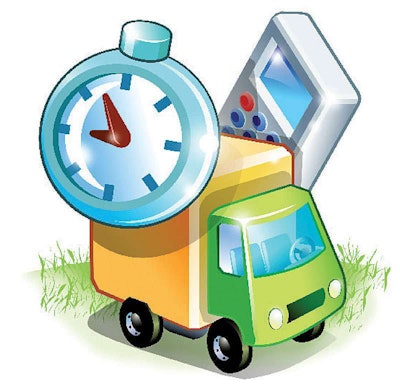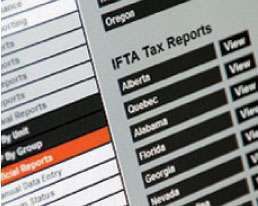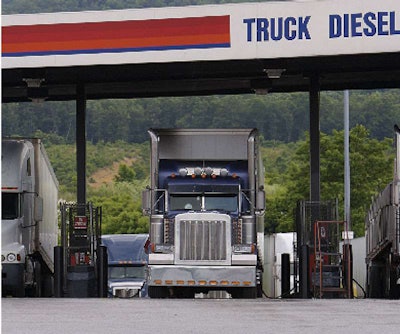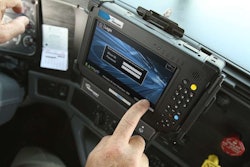Making the latest technology developments work for your fleet
The right to harass

Motor carriers have an affirmative duty to neither require nor permit drivers to violate federal regulations. And when drivers and owner-operators accept a job, they must realize that safety and compliance are nonnegotiable terms of employment.
As a result of the Federal Motor Carrier Safety Administration’s new Compliance Safety Accountability program, carriers have had to ratchet up their enforcement policies. One of the most effective methods is to adopt electronic onboard recorders. Although drivers at first may resist this policy, they have little basis to argue the technology – which makes it virtually impossible to fudge logbooks – constitutes a form of harassment.
In 1988, Congress passed a statute, U.S. Code section 31137(a), that says any regulation from the U.S. Secretary of Transportation concerning the use of monitoring devices to increase compliance with hours-of-service regulations must “ensure that the devices are not used to harass vehicle operators.” But it also says that the devices may be used to monitor operator productivity.
Now, 23 years later, the statute’s meaning of the word “harass” is frustrating FMCSA’s plan to mandate EOBRs.
In April 2010, FMCSA issued a final rule that would mandate EOBR use for fleets that had a history of serious HOS violations. Included was a statement that the agency “has taken the statutory requirement into account in the final rule.”
In late August, the U.S. Court of Appeals for the Seventh Circuit ruled in favor of a lawsuit filed against FMCSA by the Owner-Operator Independent Drivers Association. The ruling vacates the EOBR regulation and sends it back to the agency for further proceedings consistent with the opinion. The ruling also impacts the agency’s proposed rulemaking last February to require EOBRs be used by all carriers.
In the opinion, a judge wrote FMCSA’s statement can be set aside immediately because it is not enough to satisfy section 31137(a). To satisfy the court, FMCSA will have to define “harass.” The judge suggested the agency conduct a study to gather information from fleets and drivers to define the distinction between productivity and harassment and describe what precisely will prevent harassment from occurring.
The ruling undoubtedly came as a surprise to fleet owners. If using EOBRs to monitor driver compliance and productivity is legal, what would constitute harassment? No fleet owner is going to ask a driver to shorten his mandatory 10-hour break. The only conceivable way to harass drivers is to question how they spend their “on duty, not driving” time.
American Central Transport uses EOBRs on about half of its mixed fleet of company drivers and owner-operators. EOBRs allow management to see what percentage of the available 11 hours of drive time that drivers use each day. The average percentage is “surprisingly low” at 65 percent, says Tom Kretsinger Jr., president of the Liberty, Mo.-based dry van truckload carrier. This percentage is common throughout the industry, he says.
By understanding more about how drivers spend their time, fleets can help drivers make more money.
“That begs the question – where is the other 35 percent going?” Kretsinger asks. Currently, the company’s EOBR technology categorizes the “other 35 percent” as “on duty, not driving.” It does not break down the nonproductive time category any further, such as how much time is spent at shipping docks, fueling or for personal reasons. In some cases, a driver may prefer to drive only 8.5 hours a day.
An EOBR that meets the basic requirements set forth in FMCSA’s final rule does not provide insight into nonproductive time. That’s not to say fleets and technology vendors can’t create applications using macros and form messages to capture more detailed information from drivers.
Rather than being viewed as a form of harassment, EOBRs that capture more detailed information about nonproductive time actually can benefit drivers, Kretsinger says. The more fleets understand about how drivers manage their time, the more they can help drivers increase their personal earnings. How owner-operators choose to manage their time is their own business, he says.
 AARON HUFF is Senior Editor of Commercial Carrier Journal. E-mail ahuff@ccjmagazine.
AARON HUFF is Senior Editor of Commercial Carrier Journal. E-mail ahuff@ccjmagazine.While the meaning of harassment as it relates to EOBRs is somewhat of a mystery for now, one thing is certain – at least for American Central Transport.
“EOBRs are a tool to make compliance easier and cheaper,” Kretsinger says. “Drivers don’t have the stress they used to have.”
IN BRIEF
Rair (www.rair.com), a provider of safety and risk management services, has integrated its services through a single Web portal.
Rand McNally (www.randmcnally.com) dropped the price of its IntelliRoute TND navigation products. The TND 510 now is priced at $299.99, and the TND 710 is priced at $399.99.
Love’s Travel Stops (www.loves.com) plans to install radio frequency identification technology at all locations. The technology, Fuel Island Manager from QuikQ, will enable fuel transactions without a physical payment card by recognizing the truck wirelessly as it enters the fuel lane.
Vigillo (www.vigillo.com) released Carrier Select, the first product in its Shipper/Broker Suite of CSA-related products. Carrier Select is designed to allow freight brokers, shippers and insurance providers to use real-time data to analyze motor carrier performance.
Zonar (www.zonar.com) and ZoomSafer announced a strategic agreement to integrate Zonar’s fleet management technologies with ZoomSafer’s FleetSafer policy management system to help customers manage employee cell phone use while driving.
Pegasus TransTech (www.transflo.com) introduced Transflo 2012, an update of its flagship document management and workflow software.
TransCore (www.transcore.com) opened its CarrierWatch Insurance Monitoring Center to help truckload freight brokers, 3PLs and shippers onboard new carriers and monitor them on a regular basis.
Comdata markets cardless fuel system
Comdata Corp., a provider of electronic payment solutions, announced a new cardless fueling system for travel centers and trucking companies. The company says the program provides a faster, more efficient way for drivers to fuel, while giving transportation companies more options to control the fuel-purchasing process.
The cardless program uses radio frequency identification technology to initiate transactions at the fuel terminal, instead of requiring the presence of a card to facilitate the process. Companies install RFID tags in each of their vehicles that activate fuel terminals at approved RFID-equipped locations as the vehicles pull alongside them.
By the time the driver steps out to the pump, the purchase has been authorized according to specific controls established for his or her vehicle. Comdata says this streamlined process allows drivers to spend less time at the pump since the RFID tag eliminates most, if not all, of their data entry tasks; as a result, the program simplifies the overall fuel-purchasing process by automating the transaction for drivers, expediting the authorization and reducing the chances of fraud.
“Increasingly, transportation companies are looking for innovative programs that make their business more efficient and secure,” says Steve Stevenson, Comdata president. “Our new cardless program delivers both, offering convenience to keep their trucks moving and control to mitigate their risk of fraud.”
Xata rolls out RouteTracker2
Xata Corp. has released its new RouteTracker2 electronic onboard recorder for Xata Turnpike. Available to all new and current Xata Turnpike customers, RouteTracker2 is designed for full compliance with current 395.15 regulations and 395.16 EOBR technical requirements.

“Because it comes with over-the-air upgradable firmware, it can be updated anywhere, anytime, so it remains compliant, even in the face of ever-changing regulations,” Warkentin says.
IN FOCUS: FUEL TAX MANAGEMENT
Beyond fuel taxes
Third parties add data analysis, other services to IFTA reporting
Mobile computers and fuel cards capture state-by-state mileages and fuel purchases, the only two data elements needed to prepare International Fuel Tax Association fuel taxes. So why do roughly one-third of fleets outsource their fuel taxes to a third party?

Once a third party has fuel tax data, it can provide benefits beyond cost reduction and compliance.
Ensuring accuracy
Even though technology can automate data collection, it is not seamless or infallible. Mobile computers can yield faulty readings or experience downtime. Miles could be missing on fuel taxes. One advantage of outsourcing is that companies can verify the accuracy of state-by-state mileage by auditing multiple data sources.
Internet Truckstop offers an integrated IFTA fuel tax service that pulls GPS and odometer readings from the company’s uDrove mobile application for smartphones. The service also extracts trip information from the company’s ITS dispatch software system. Internet Truckstop’s fuel tax service also can pull fuel purchase data automatically from Wright Express’ new OTR Pro over-the-road fuel purchasing card.
Xata Turnpike, a fleet management and compliance software system, uses a small onboard device and a mobile application for smartphones or handhelds. Xata Turnpike automatically collects state-by-state mileages, while driver fuel-purchase data can be imported through Web services.
The system includes reporting and fuel tax filing services, and Xata Turnpike ensures fuel and mileage data is accurate before filing; the service includes data audit reports that identify missing fuel purchase records, duplicates and exceptions. A third party assumes responsibility for data accuracy and will work directly with clients to obtain missing information.
J.J. Keller and Associates offers a data test that compares vehicle mileages against GPS, fuel and dispatch records. Once fuel purchase and mileage data is verified and accurate, it serves as the basis for calculating a corporate mpg and to determine the fuel burned in each state. “A lot of times, we find gaps,” says Mark Catlin, account executive for business services.
Out-of-route and more
Once a third party has a fleet’s fuel tax data, it can provide a number of value-added reporting services.
J.J. Keller provides customers with mpg reports that show corporatewide mpg, the mpg of an individual terminal and on down to individual vehicles. Owner-operator fleets often will use the individual vehicle mpg reports to charge fuel taxes back to their drivers or to pass on credits based on the mpg of each driver.
Comdata extracts GPS, odometer and dispatch data from all types of systems. By combining this with the fuel purchase information captured by a Comdata fuel card or any other fuel card, the company can provide accurate mpg reports to customers as part of its fuel tax service. The mpg reports are configurable by driver and fleet manager and by make, model and year of engine and tractor.
Comdata also provides out-of-route reporting that compares a vehicle’s actual route and fuel purchases to the planned route and purchases. Fleets can streamline their reporting process to monitor their drivers’ fuel and route compliance, says Bob Terneus, vice president of national accounts.
Operating Tax Systems offers daily out-of-route and mpg reporting as part of its fuel tax service. OTS will customize its reports for free; examples include analyzing the mpg of vehicles by year, make and model, or by type of tire.
OTS is starting a new division called Informatics to create new types of reports for customers that want the company to manage more than fuel tax data. Toll costs are one example: New York and Oregon give tax credits for miles traveled on toll roads. OTS is able to collect toll information from agencies such as EZ Pass and compare it with a company’s GPS, dispatch and mileage data to calculate the actual toll cost per load, says John Sheets, chief information officer.
Predictive modeling
Fuel tax data such as mileages, fuel purchases and dispatch records is just the starting point for Vusion, a division of PeopleNet. Fuel tax data that is audited and verified will provide the vehicle’s actual mpg, but it won’t reveal the vehicle’s mpg potential.
Vusion captures ECM engine data directly through the PeopleNet onboard computing platform; the data includes driver events such as speed and rpms that determine mpg. Vusion also captures data from dispatch software systems that contribute to mpg such as loaded versus empty mileage by vehicle and load weights; this second data set helps create predictive models for fuel economy by vehicle.
The predictive model provides an accurate way to compare the mpg performance of vehicles, says Tom Fansler, president of Vusion. The actual mpg of two trucks may be identical, but if one truck has a higher percentage of empty miles and a driver with lower rpms, the truck’s mpg should be higher; this difference could result from a maintenance issue or fuel theft.
Technology has automated the collection of fuel tax data, but fuel tax providers can extract the full value of that data and ensure compliance.












